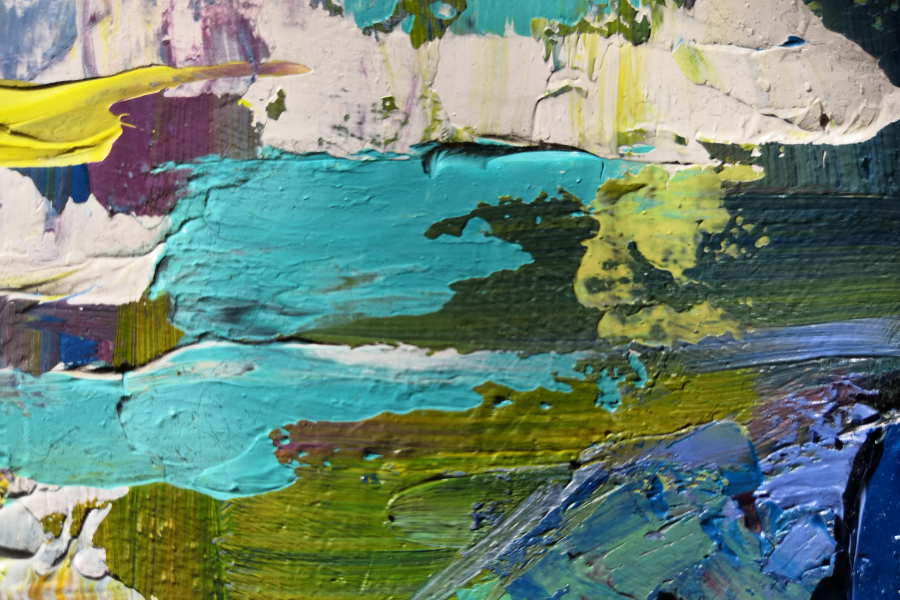10 Oil Painting Tips for Beginners

Hello, how are you today? Welcome to our blog About Painting and Art. We hope you are very well and looking forward to a new Free Art and painting Post or Tutorial.
Today we want to share with you a special post:
How do you start an oil painting for beginners?
Artists have been painting with oil paints for hundreds of years, and oil paints continue to be popular around the world due to their versatility, quality, and color. While getting started with oil painting is pretty easy, there is a bit more to it than acrylic because you are working with solvents and toxic media and the drying time is much longer. Individual artists who have been painting for a while have their own favorite brands, brushes, palettes, and media, but here are some general tips that may be helpful if you are new to oil paints.
Start with small boxes
Painting small allows you to try techniques and experiment with color without investing too much time or material in the process. You can buy small 8x10-inch canvases or canvas boards, or even try oil painting on paper. (Remember to gesso the paper first).
Get organized
Set up space in a well-ventilated area where you can have your pallets and supplies on hand and your paintings visible. This will allow you to see and reflect on your work, even if you are not actually painting. It will also make the painting process easier so that you feel inclined to paint more often, even daily if possible. Your work will improve quickly if you paint a lot. It is the practice of making art.
Invest in brushes
Buy professional quality paintings because you can afford them instead of for students. Professional grade has a higher pigment/binder ratio. Buy only a few better quality brushes; three different sizes should be good to start with. You can buy more and experiment with the different shapes as you paint more. You can use synthetic brushes designed for acrylic oil paints, but there is also a range of natural hair brushes that can be used with oil. Bristle (pig) brushes are the most widely used.
Print your paint surface
You can paint on many different surfaces (canvas, wood, paper), but whatever you choose, it is important to apply a type of primer called plaster to the surface of the paint to prevent oil from seeping through. On the surface, protect the surface from acids in the paint and provide a surface to which the paint will adhere more easily. You can also use pre-printed boards or canvas and apply another coat or two of plaster to them if you want a smoother surface. Ampersand Gessobord is a beautiful, smooth, and durable surface to work with.
Understand the mix of colors and colors.

Primary paint colors are not "pure" but rather lean towards yellow or blue, making them warm if they are towards yellow, or cool if they are towards blue. This influences how the primary colors are combined to produce the secondary colors.
Use a limited paint palette
Don't think you have to use all the colors in your paint at once. Start with a monochrome paint, a single-tone paint plus its shades (black added), and tints (white added). You can use any color depending on whether you want cold or warm paint. This will allow you to feel the paint. When you're ready, add a warm and cool color from each primary color to your palette, along with earthy tones like scorched sienna, scorched ombre, and yellow ocher.
Start with an oil sketch
It is a thin base coat made up of color and turpentine (or an odorless turpentine substitute such as turpentine). It will dry quickly, so you can add the next coats of paint and color without waiting too long for it to dry. Scorched sienna is useful for setting values and composition, whether you're working on a white canvas or toning it with a neutral gray first.
Understanding the paint order
Paint thick over fine, oily over lean, and slow dry over quick dry. This means using thinner paint and less oil in the first coats, saving thicker paint and higher oil content for later coats. This will help ensure that the previous coats dry first and will prevent the paint from cracking. Start with a base coat of paint and turpentine, then switch to a painting medium made from a combination of turpentine and linseed oil in a 2: 1 ratio. Linseed oil can turn yellow with the oil. dries faster than other oils.
Clean your brush

It is important to clean your brush between colors and with soap and water when you finish painting. Oil paint can get messy. Have paper towels and rags on hand to clean excess paint and turpentine from your brushes. Have two containers available to paint: one for white spirit to clean your brush between colors and one for the medium to mix with your paint.
Keep it tidy
Oil paintings and media are toxic if ingested or absorbed through the skin. Keep them out of the reach of pets and small children. Properly dispose of paints, media, rags, paper towels, and disposable paper pallets or paper plates (also useful as pallets). Rags and paper should be soaked or soaked in water before throwing them away as they are flammable, can become hot when drying, and sometimes spontaneously burn.
Enjoy The Video Tutorial about My 10 Best TIPS for OIL PAINTING!
Source: Paint Coach

Ok, That is all for now…
If you enjoyed this article please, Share and Like our Facebook Page. Thanks.
See you in the next post, Have a Wonderful Day!

You might also enjoy these articles: